Numerical Modelling and Validation of Mixed-Mode Fracture Tests to Adhesive Joints Using J-Integral Concepts
Abstract
1. Introduction
2. Materials and Methods
2.1. Geometry
2.2. Materials
2.3. Experimental Details
2.4. J-Integral Formulation
2.5. Numerical Modelling
2.6. Triangular CZM
3. Results and Discussions
3.1. P-δ Curves
3.2. Toughness Estimation
3.3. Fracture Envelope
3.4. CZM Laws
3.5. CZM Law Validation
3.6. Fracture Envelope Validation
3.7. CZM Parameter Analysis
4. Conclusions
Author Contributions
Funding
Informed Consent Statement
Data Availability Statement
Conflicts of Interest
References
- Budzik, M.K.; Wolfahrt, M.; Reis, P.; Kozłowski, M.; Sena-Cruz, J.; Papadakis, L.; Nasr Saleh, M.; Machalicka, K.V.; Teixeira de Freitas, S.; Vassilopoulos, A.P. Testing mechanical performance of adhesively bonded composite joints in engineering applications: An overview. J. Adhes. 2022, 98, 2133–2209. [Google Scholar] [CrossRef]
- Tserpes, K.; Barroso-Caro, A.; Carraro, P.A.; Beber, V.C.; Floros, I.; Gamon, W.; Kozłowski, M.; Santandrea, F.; Shahverdi, M.; Skejić, D.; et al. A review on failure theories and simulation models for adhesive joints. J. Adhes. 2022, 98, 1855–1915. [Google Scholar] [CrossRef]
- Da Silva, L.F.M.; Giannis, S.; Adams, R.D.; Nicoli, E.; Cognard, J.-Y.; Créac’hcadec, R.; Blackman, B.R.K.; Singh, H.K.; Frazier, C.E.; Sohier, L.; et al. Manufacture of Quality Specimens. In Testing Adhesive Joints: Best Practices; da Silva, L.F.M., Dillard, D.A., Blackman, B., Adams, R.D., Eds.; Wiley-VCH Verlag & Co. KGaA: Weinheim, Germany, 2012; pp. 1–78. [Google Scholar]
- Shahapurkar, K.; Alblalaihid, K.; Chenrayan, V.; Alghtani, A.H.; Tirth, V.; Algahtani, A.; Alarifi, I.M.; Kiran, M.C. Quasi-Static Flexural Behavior of Epoxy-Matrix-Reinforced Crump Rubber Composites. Processes 2022, 10, 956. [Google Scholar] [CrossRef]
- Banea, M.D.; da Silva, L.F.M.; Campilho, R.D.S.G. The Effect of Adhesive Thickness on the Mechanical Behavior of a Structural Polyurethane Adhesive. J. Adhes. 2015, 91, 331–346. [Google Scholar] [CrossRef]
- Kafkalidis, M.S.; Thouless, M.D. The effects of geometry and material properties on the fracture of single lap-shear joints. Int. J. Solids Struct. 2002, 39, 4367–4383. [Google Scholar] [CrossRef]
- Astrouski, I.; Kudelova, T.; Kalivoda, J.; Raudensky, M. Shear Strength of Adhesive Bonding of Plastics Intended for High Temperature Plastic Radiators. Processes 2022, 10, 806. [Google Scholar] [CrossRef]
- Dillard, D.A. Fracture Mechanics of Adhesive Bonds; Adams, R.D., Ed.; Woodhead Publishing Limited: Sawston, UK, 2005; pp. 189–208. [Google Scholar]
- Pearson, R.A.; Blackman, B.R.K.; Campilho, R.D.S.G.; de Moura, M.F.S.F.; Dourado, N.M.M.; Adams, R.D.; Dillard, D.A.; Pang, J.H.L.; Davies, P.; Ameli, A.; et al. Quasi-Static Fracture Tests. In Testing Adhesive Joints: Best Practices; da Silva, L.F.M., Dillard, D.A., Blackman, B.R.K., Adams, R.D., Eds.; Wiley-VCH Verlag & Co. KGaA: Weinheim, Germany, 2012; pp. 163–272. [Google Scholar]
- Chaves, F.J.P.; da Silva, L.F.M.; de Moura, M.F.S.F.; Dillard, D.A.; Esteves, V.H.C. Fracture mechanics tests in adhesively bonded joints: A literature review. J. Adhes. 2014, 90, 955–992. [Google Scholar] [CrossRef]
- Ji, G.; Ouyang, Z.; Li, G. On the interfacial constitutive laws of mixed mode fracture with various adhesive thicknesses. Mech. Mater. 2012, 47, 24–32. [Google Scholar] [CrossRef]
- Faneco, T.M.S.; Campilho, R.; Silva, F.J.G.; Lopes, R. Strength and fracture characterization of a novel polyurethane adhesive for the automotive industry. J. Test. Eval. 2017, 45, 398–407. [Google Scholar] [CrossRef]
- Cardoso, M.G.; Pinto, J.E.C.; Campilho, R.D.S.G.; Nóvoa, P.J.R.O.; Silva, F.J.G.; Ramalho, L.D.C. A new structural two-component epoxy adhesive: Strength and fracture characterization. Procedia Manuf. 2020, 51, 771–778. [Google Scholar] [CrossRef]
- Shiino, M.Y.; Alderliesten, R.C.; Donadon, M.V.; Cioffi, M.O.H. The relationship between pure delamination modes I and II on the crack growth rate process in cracked lap shear specimen (CLS) of 5 harness satin composites. Compos. Part A Appl. Sci. Manuf. 2015, 78, 350–357. [Google Scholar] [CrossRef]
- Bennati, S.; Fisicaro, P.; Valvo, P.S. An enhanced beam-theory model of the mixed-mode bending (MMB) test—Part I: Literature review and mechanical model. Meccanica 2013, 48, 443–462. [Google Scholar] [CrossRef]
- Oliveira, J.J.G.; Campilho, R.D.S.G.; Silva, F.J.G.; Marques, E.A.S.; Machado, J.J.M.; da Silva, L.F.M. Adhesive thickness effects on the mixed-mode fracture toughness of bonded joints. J. Adhes. 2020, 96, 300–320. [Google Scholar] [CrossRef]
- Santos, M.A.S.; Campilho, R.D.S.G. Mixed-mode fracture analysis of composite bonded joints considering adhesives of different ductility. Int. J. Fract. 2017, 207, 55–71. [Google Scholar] [CrossRef]
- Loureiro, F.J.C.F.B.; Campilho, R.D.S.G.; Rocha, R.J.B. J-integral analysis of the mixed-mode fracture behaviour of composite bonded joints. J. Adhes. 2020, 96, 321–344. [Google Scholar] [CrossRef]
- Adams, R.D.; Peppiatt, N.A. Stress analysis of adhesive-bonded lap joints. J. Strain Anal. 1974, 9, 185–196. [Google Scholar] [CrossRef]
- Alfano, G. On the influence of the shape of the interface law on the application of cohesive-zone models. Compos. Sci. Technol. 2006, 66, 723–730. [Google Scholar] [CrossRef]
- Reis, J.P.; de Moura, M.F.S.F.; Moreira, R.D.F.; Silva, F.G.A. Mixed mode I + II interlaminar fracture characterization of carbon-fibre reinforced polyamide composite using the Single-Leg Bending test. Mater. Today Commun. 2019, 19, 476–481. [Google Scholar] [CrossRef]
- Yoon, S.H.; Hong, C.S. Modified end notched flexure specimen for mixed mode interlaminar fracture in laminated composites. Int. J. Fract. 1990, 43, R3–R9. [Google Scholar] [CrossRef]
- Campilho, R.D.S.G.; Banea, M.D.; Pinto, A.M.G.; da Silva, L.F.M.; de Jesus, A.M.P. Strength prediction of single- and double-lap joints by standard and extended finite element modelling. Int. J. Adhes. Adhes. 2011, 31, 363–372. [Google Scholar] [CrossRef]
- Campilho, R.D.S.G.; Moura, D.C.; Gonçalves, D.J.S.; da Silva, J.F.M.G.; Banea, M.D.; da Silva, L.F.M. Fracture toughness determination of adhesive and co-cured joints in natural fibre composites. Compos. Part B Eng. 2013, 50, 120–126. [Google Scholar] [CrossRef]
- Da Silva, L.F.M.; Dillard, D.A.; Blackman, B.; Adams, R.D. Testing Adhesive Joints; Wiley: Hoboken, NJ, USA, 2012. [Google Scholar]
- Ribeiro, T.E.A.; Campilho, R.D.S.G.; da Silva, L.F.M.; Goglio, L. Damage analysis of composite–aluminium adhesively-bonded single-lap joints. Compos. Struct. 2016, 136, 25–33. [Google Scholar] [CrossRef]
- Campilho, R.D.S.G.; de Moura, M.F.S.F.; Domingues, J.J.M.S. Modelling single and double-lap repairs on composite materials. Compos. Sci. Technol. 2005, 65, 1948–1958. [Google Scholar] [CrossRef]
- Rice, J.R. A path independent integral and the approximate analysis of strain concentration by notches and cracks. J. Appl. Mech. 1968, 35, 379–386. [Google Scholar] [CrossRef]
- Wu, E.M.; Reuter, R.C.J. Crack Extension in Fiberglass Reinforced Plastics; T&AM Report No. 275; Department of Theoretical and Applied Mechanics, University of Illinois: Urbana, IL, USA, 1965. [Google Scholar]
- Alfano, G.; Crisfield, M.A. Finite element interface models for the delamination analysis of laminated composites: Mechanical and computational issues. Int. J. Numer. Methods Eng. 2001, 50, 1701–1736. [Google Scholar] [CrossRef]
- Leitão, A.C.C.; Campilho, R.D.S.G.; Moura, D.C. Shear Characterization of Adhesive Layers by Advanced Optical Techniques. Exp. Mech. 2016, 56, 493–506. [Google Scholar] [CrossRef]
- Kim, K. Softening behaviour modelling of aluminium alloy 6082 using a non-linear cohesive zone law. Proc. Inst. Mech. Eng. Part L J. Mater. Des. Appl. 2015, 229, 431–435. [Google Scholar] [CrossRef]
- Constante, C.J.; Campilho, R.D.S.G.; Moura, D.C. Tensile fracture characterization of adhesive joints by standard and optical techniques. Eng. Fract. Mech. 2015, 136, 292–304. [Google Scholar] [CrossRef]
- Leffler, K.; Alfredsson, K.S.; Stigh, U. Shear behaviour of adhesive layers. Int. J. Solids Struct. 2007, 44, 530–545. [Google Scholar] [CrossRef]
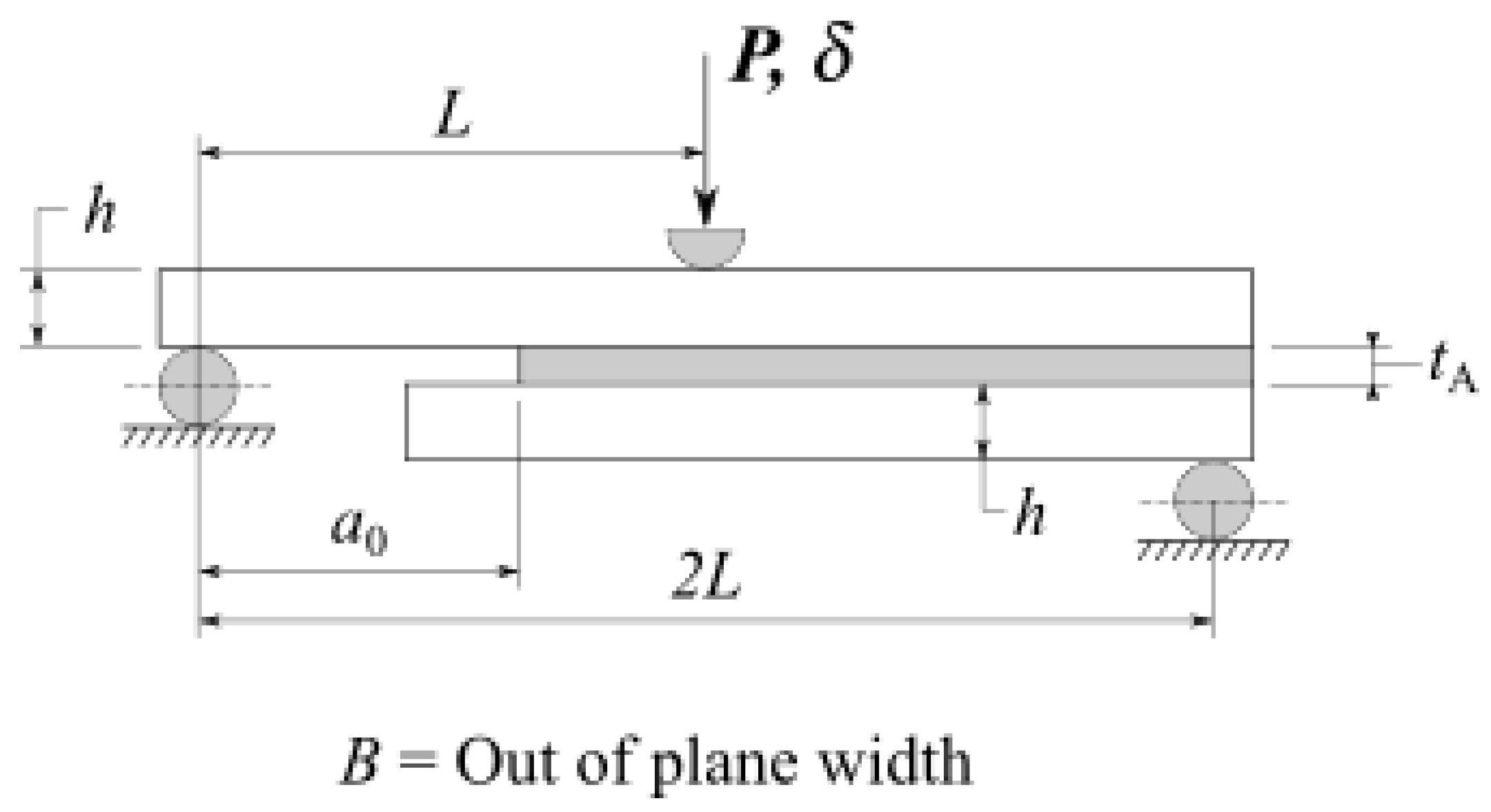
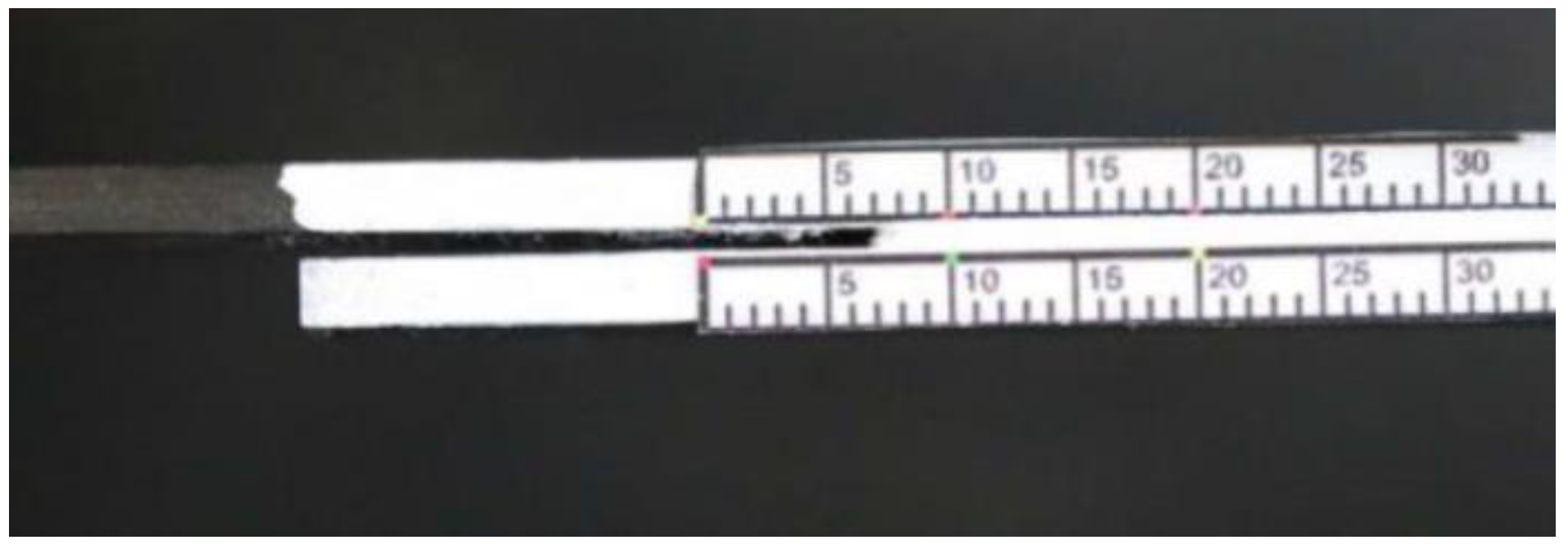
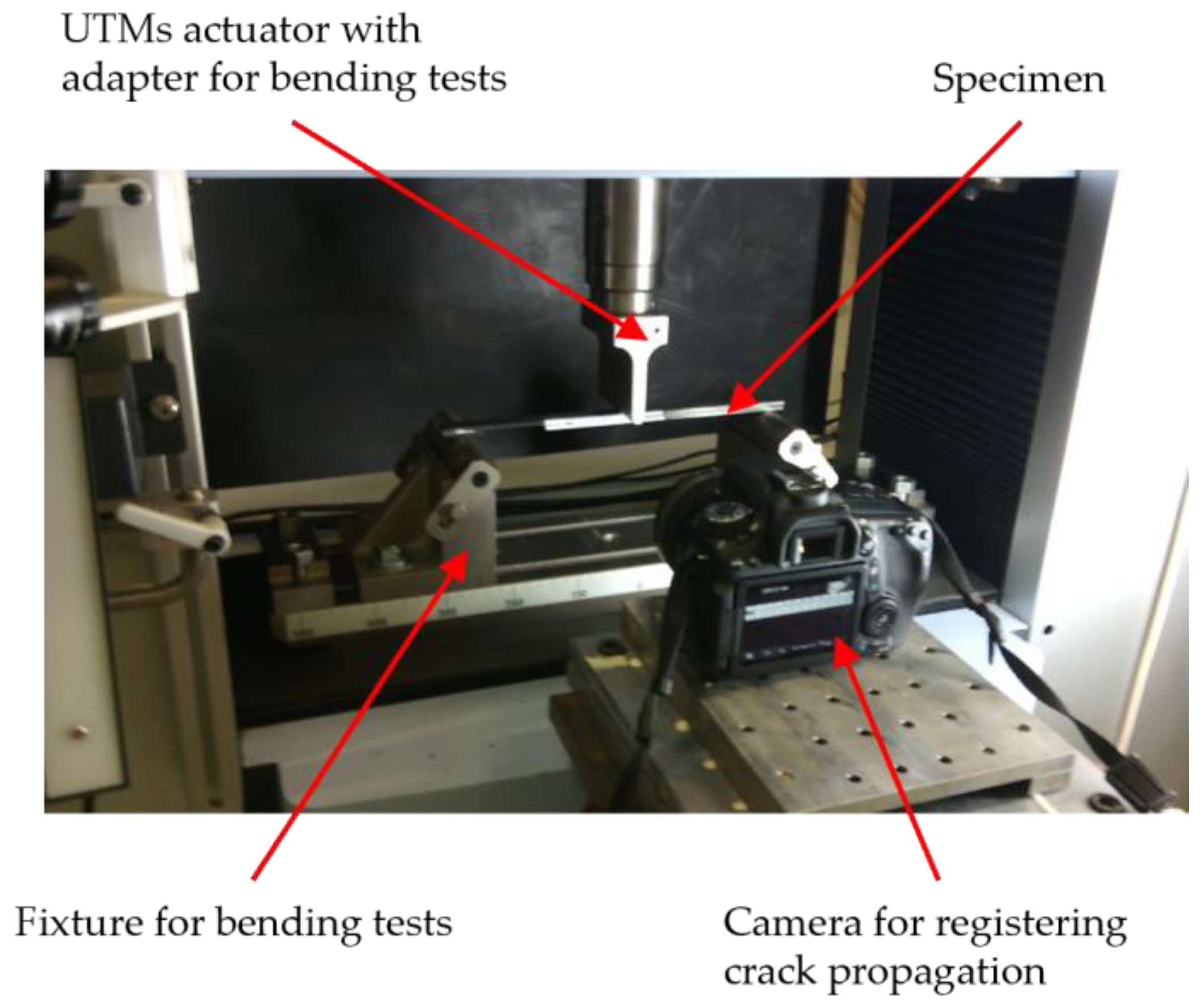
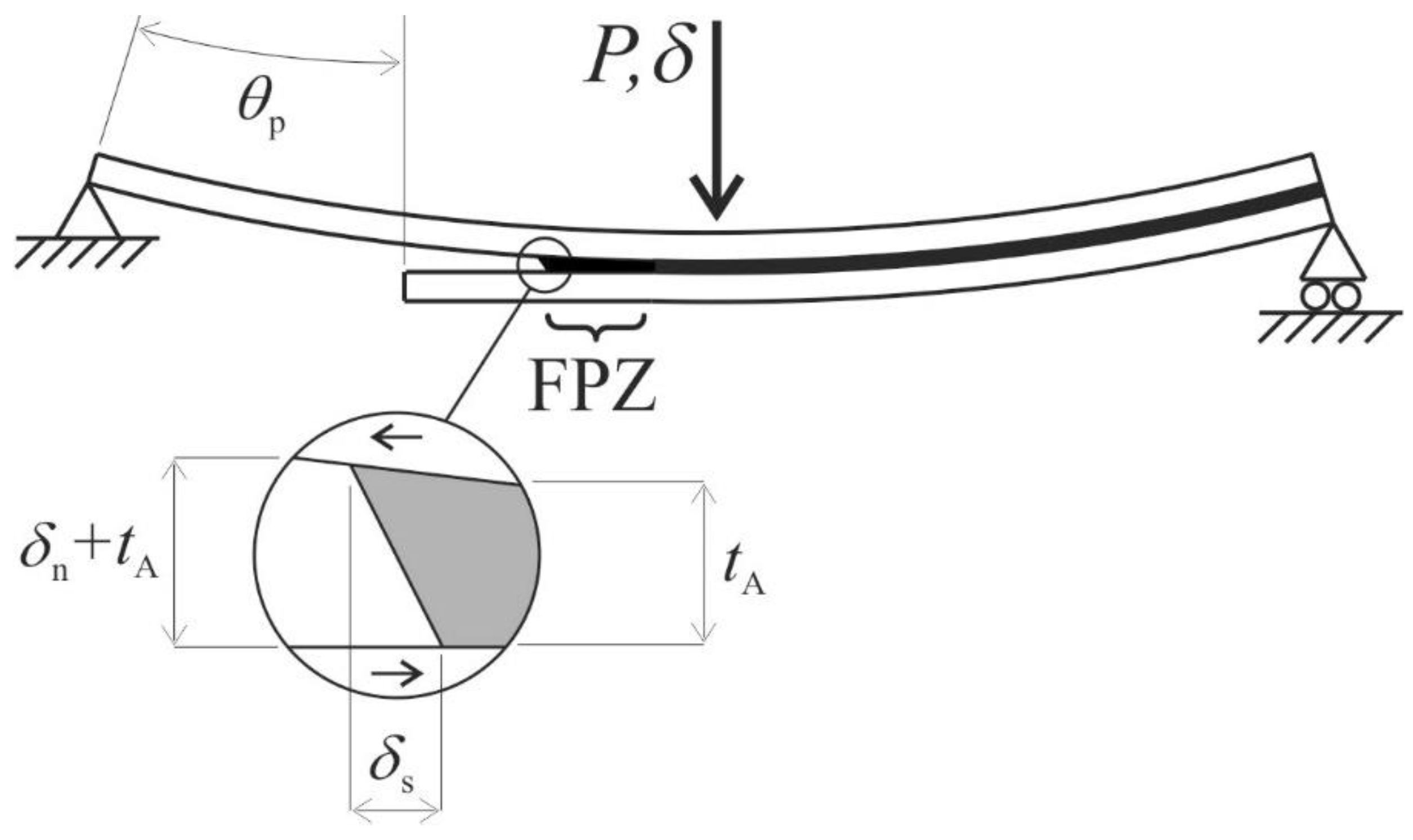






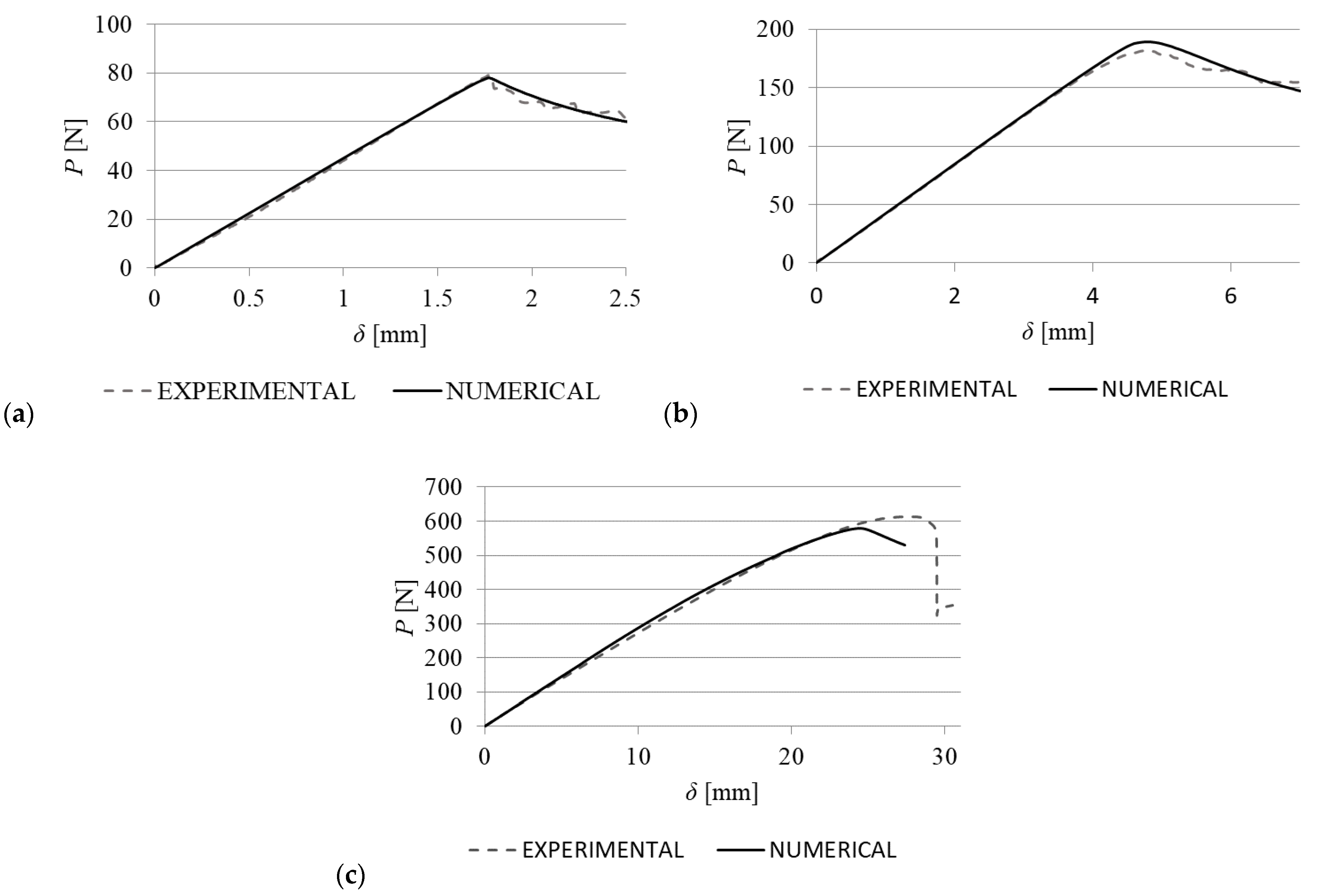

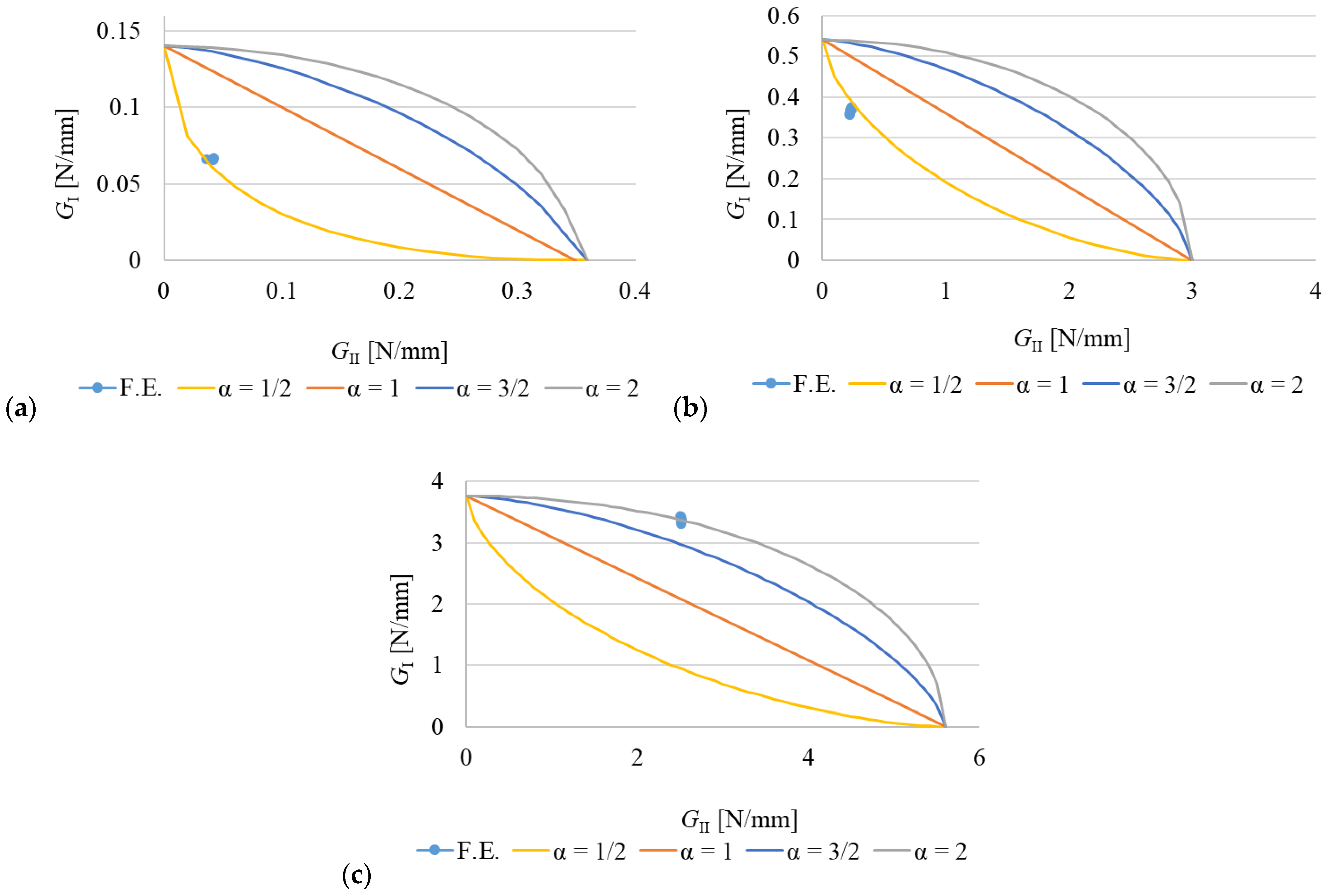
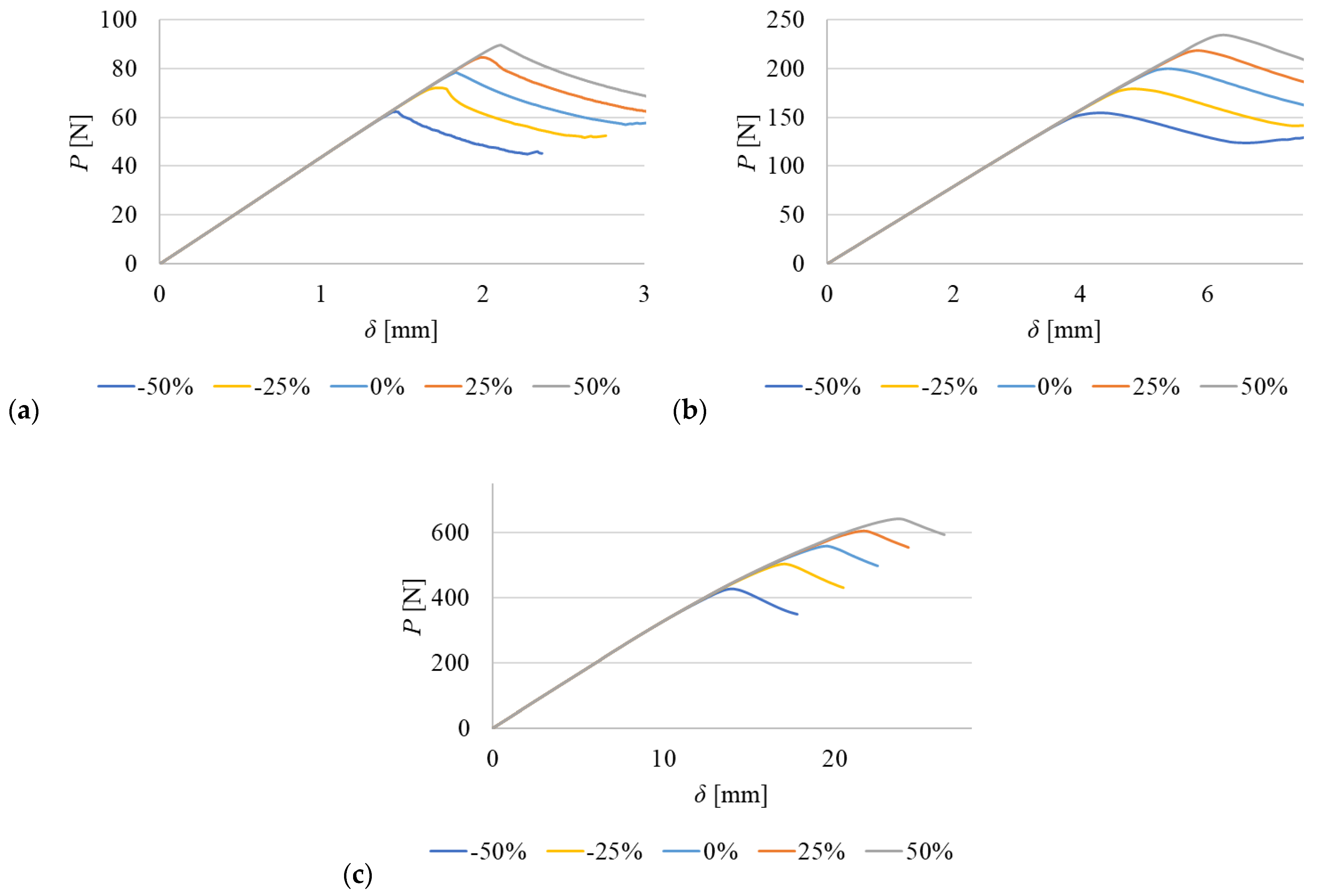
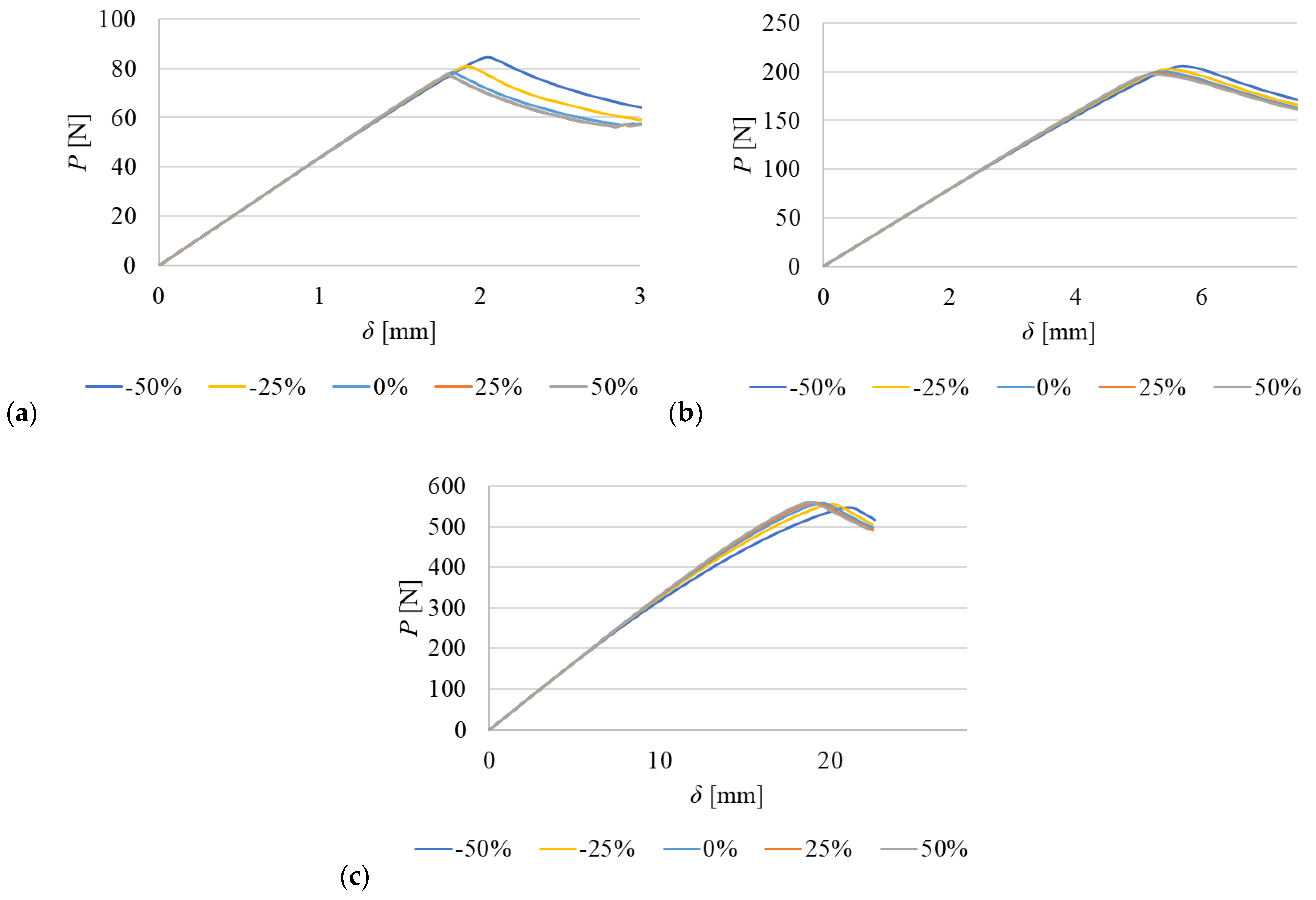
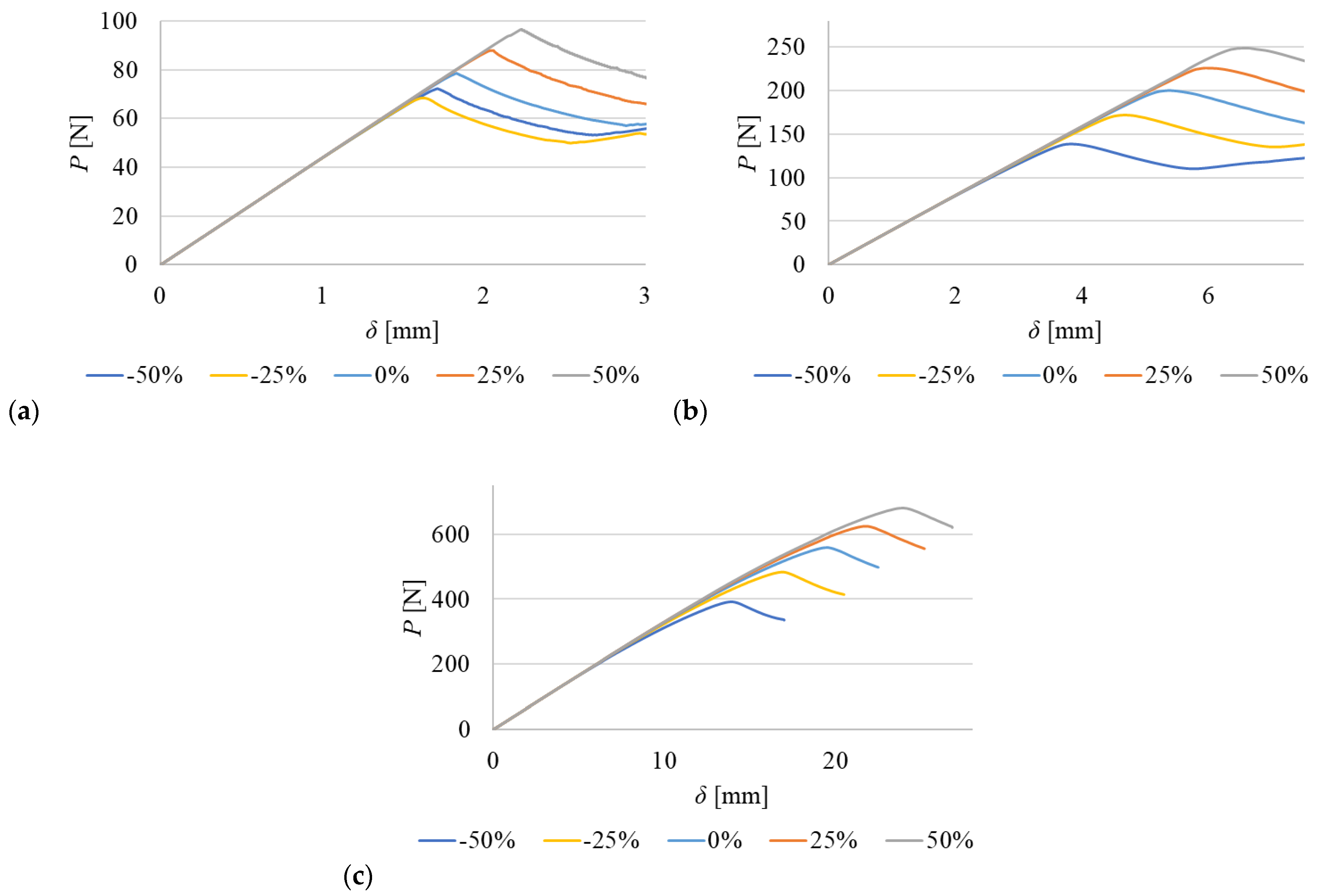
| AV138 | 2015 | 7752 | ||||
|---|---|---|---|---|---|---|
| Nom | Std | Nom | Std | Nom | Std | |
| Young’s modulus, E [GPa] | 4890 | 0.81 | 1850 | 0.21 | 493.81 | 89.60 |
| Poisson’s ratio, ν | 0.35 | - | 0.35 | - | 0.32 | - |
| Tensile yield stress, σy [MPa] | 36.49 | 2.47 | 12.63 | 0.61 | 3.24 | 0.48 |
| Tensile strength, σf [MPa] | 39.45 | 3.18 | 21.63 | 1.61 | 11.49 | 0.25 |
| Tensile failure strain, εf [%] | 1.21 | 0.10 | 4.77 | 0.15 | 19.18 | 1.40 |
| Shear modulus, G [GPa] | 1560 | 0.01 | 560 | 0.21 | 187.75 | 16.35 |
| Shear yield stress, τy [MPa] | 25.1 | 0.33 | 14.6 | 1.30 | 5.16 | 1.14 |
| Shear strength, τf [MPa] | 30.2 | 0.40 | 17.9 | 1.80 | 10.17 | 0.64 |
| Shear failure strain, γf [%] | 7.8 | 0.70 | 43.9 | 3.40 | 54.82 | 6.39 |
| GIC [N/mm] | 0.2 | - | 0.43 | 0.02 | 2.36 | 0.17 |
| GIIC [N/mm] | 0.38 | - | 4.7 | 0.34 | 5.41 | 0.47 |
| E | G | ν | |||
|---|---|---|---|---|---|
| Direction | Value (MPa) | Direction | Value (MPa) | Direction | Value |
| 1 | 109,000 | 12 | 4315 | 12 | 0.342 |
| 2 | 8819 | 13 | 4315 | 13 | 0.342 |
| 3 | 8819 | 23 | 3200 | 23 | 0.38 |
| Araldite® AV138 | Araldite® 2015 | SikaForce® 7752 | ||||
|---|---|---|---|---|---|---|
| Specimen No. | GI [N/mm] | GII [N/mm] | GI [N/mm] | GII [N/mm] | GI [N/mm] | GII [N/mm] |
| Average | 0.0657 | 0.0404 | 0.3663 | 0.263 | 3.383 | 2.567 |
| Deviation | 0.0024 | 0.0017 | 0.0073 | 0.016 | 0.050 | 0.042 |
Publisher’s Note: MDPI stays neutral with regard to jurisdictional claims in published maps and institutional affiliations. |
© 2022 by the authors. Licensee MDPI, Basel, Switzerland. This article is an open access article distributed under the terms and conditions of the Creative Commons Attribution (CC BY) license (https://creativecommons.org/licenses/by/4.0/).
Share and Cite
Neves, L.F.R.; Campilho, R.D.S.G.; Sánchez-Arce, I.J.; Madani, K.; Prakash, C. Numerical Modelling and Validation of Mixed-Mode Fracture Tests to Adhesive Joints Using J-Integral Concepts. Processes 2022, 10, 2730. https://doi.org/10.3390/pr10122730
Neves LFR, Campilho RDSG, Sánchez-Arce IJ, Madani K, Prakash C. Numerical Modelling and Validation of Mixed-Mode Fracture Tests to Adhesive Joints Using J-Integral Concepts. Processes. 2022; 10(12):2730. https://doi.org/10.3390/pr10122730
Chicago/Turabian StyleNeves, Luís F. R., Raul D. S. G. Campilho, Isidro J. Sánchez-Arce, Kouder Madani, and Chander Prakash. 2022. "Numerical Modelling and Validation of Mixed-Mode Fracture Tests to Adhesive Joints Using J-Integral Concepts" Processes 10, no. 12: 2730. https://doi.org/10.3390/pr10122730
APA StyleNeves, L. F. R., Campilho, R. D. S. G., Sánchez-Arce, I. J., Madani, K., & Prakash, C. (2022). Numerical Modelling and Validation of Mixed-Mode Fracture Tests to Adhesive Joints Using J-Integral Concepts. Processes, 10(12), 2730. https://doi.org/10.3390/pr10122730









